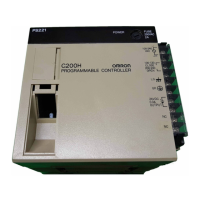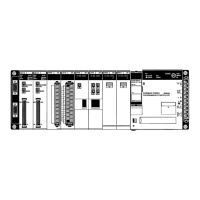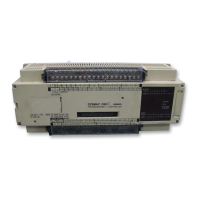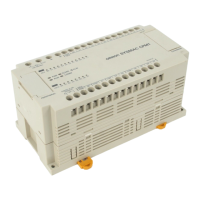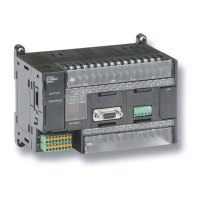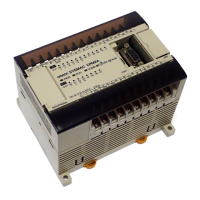37
Appendix E
Using the C200H Temperature Sensor Unit
with CS1-series PCs
I/O Allocation
When using the C200H Temperature Sensor Unit with a CS1-series PC, the first
word, n, of I/O memory allocated to a Unit will be given by n = 2000 + unit no. × 10
(not n = 100 + 10 × unit no.). Other than this, there are no points that need particu-
lar attention.
Data Configuration
Bit Allocation
The following table shows the bit allocation for the Temperature Sensor Unit
when using a CS1-series PC.
Word no. Bit Allocation Contents Direction
n
0 to
Commands from CPU Unit Temperature specification code no. CPU to Temperature Sensor Unit
n + 1
15
Analog input status
Conversion data of input 1
Temperature Sensor Unit to CPU
n + 2 Conversion data of input 2
n + 3 Conversion data of input 3
n + 4 Conversion data of input 4
n + 5 Disconnection detection, setting
errors etc.
Note In the above table, n = 2000 + unit no. × 10.
DM Area allocation
The DM area is not used.
Settings and Operation
Initial Settings (Hardware Settings)
Make the following settings before using the Temperature Sensor Unit.
1, 2, 3... 1. Using the DIP switch on the back panel of the Temperature Sensor Unit, set
the number of input points and the sensor type.
2. Using the switch on the front panel, set the unit number.
3. Mount to a CS1 CPU Rack, a C200H Expansion I/O Rack, a CS1 Expansion
I/O Rack or a SYSMAC BUS Remote I/O Slave Unit. In the basic configura-
tion up to 10 Units can be mounted. (There are no restrictions with regard to
mounting position.)
4. Connect the Temperature Sensor.
5. Connect the Programming Device to the PC.
6. Turn ON power for the PC.
7. Create I/O tables.
Ladder Program
Make the following settings using the ladder program.
1, 2, 3... 1. Set the temperature specification code (range) using the MOV instruction.
2. Read temperature data using the MOV instruction.
Ladder Program
The ladder program is used in the following way.
1, 2, 3... 1. The temperature specification code (word n) is set with the MOV instruction
using the always ON flag as the input condition.
2. If the signal setting on standby (word n + 5, bit 06) is ON and the setting error
flag (word n + 5, bit 00) is OFF, the temperature specification setting flag
(word n, bit 15) will be turned ON, using for example, the OUT instruction.

